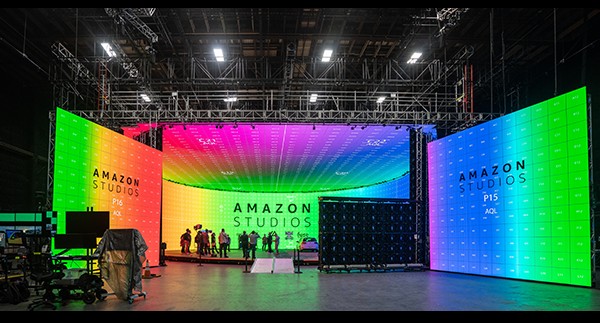As LED display technology continues to evolve, COB (Chip-on-Board) and SMD (Surface-Mount Device) have emerged as two of the most discussed packaging methods. Each has distinct advantages and ideal use cases—but which is the right fit for your project?
Whether you’re building a large outdoor screen, a high-end indoor video wall, or a compact signage solution, understanding the true differences between COB and SMD can help you make a better-informed decision.

LED screens are widely used and even be seen at film studios.
SMD is the long-standing standard in the LED display industry. It involves placing red, green, and blue LED chips into a single compact package, which is then mounted onto the PCB using surface-mount technology. This approach has powered most commercial LED displays over the past decade.
It’s important to note that with the rise of micro LED technology, SMD packaging has also evolved. Today, certain high-precision SMD LEDs can achieve pixel pitches under 1.0mm, making them suitable for fine-pitch indoor displays and even ultra-high-resolution video walls.
COB is a newer packaging method where multiple tiny LED chips are mounted directly onto the PCB and then encapsulated together in a resin or epoxy layer. This results in a seamless, flat surface with fewer exposed soldering points.
Key Benefits of COB:
| Feature | SMD LED (incl. Micro SMD) | COB LED |
| Pixel Pitch Range | P10 to <P1.0 (with micro SMD LEDs) | Typically P1.5 to P0.4 |
| Visual Performance | Bright, vibrant with excellent color mixing | Uniform surface, high contrast |
| Protection Level | Standard; protective masks optional | Fully sealed surface; impact-resistant |
| Maintenance | Easy to replace individual LEDs or modules | More challenging to repair |
| Heat Dissipation | Adequate with proper PCB design | Better thermal path due to direct bonding |
| Cost Efficiency | Scalable and cost-effective across many sizes | Higher upfront cost; premium applications |
| Use Cases | Indoor/outdoor signage, rental displays, control rooms | High-end indoor video walls, touch displays |
| Technology Maturity | Highly mature, widely supported | Still evolving, especially in large-scale use |
SMD is not limited to “larger pixel pitch” displays—recent innovations have brought sub-1.0mm SMD LEDs to market.
Manufacturers can now build micro LED displays using SMD technology, benefiting from both precision and flexibility.
There’s no one-size-fits-all answer. Your decision depends on your project’s budget, environment, maintenance needs, and resolution requirements.
Both COB and SMD technologies are helping push the LED display industry forward—but in different ways. While COB is gaining traction in premium, fine-pitch indoor displays, SMD remains the dominant and most versatile technology, continuously evolving to meet finer resolution needs.
At Kinglight, we specialize in producing high-quality SMD LED packages, including solutions for ultra-fine pitch and micro LED applications. We work closely with display manufacturers to deliver components that ensure excellent brightness, uniformity, and durability.
Looking for reliable SMD LEDs for your LED display modules? Contact Kinglight today and let us help you build a brighter screen—one pixel at a time.